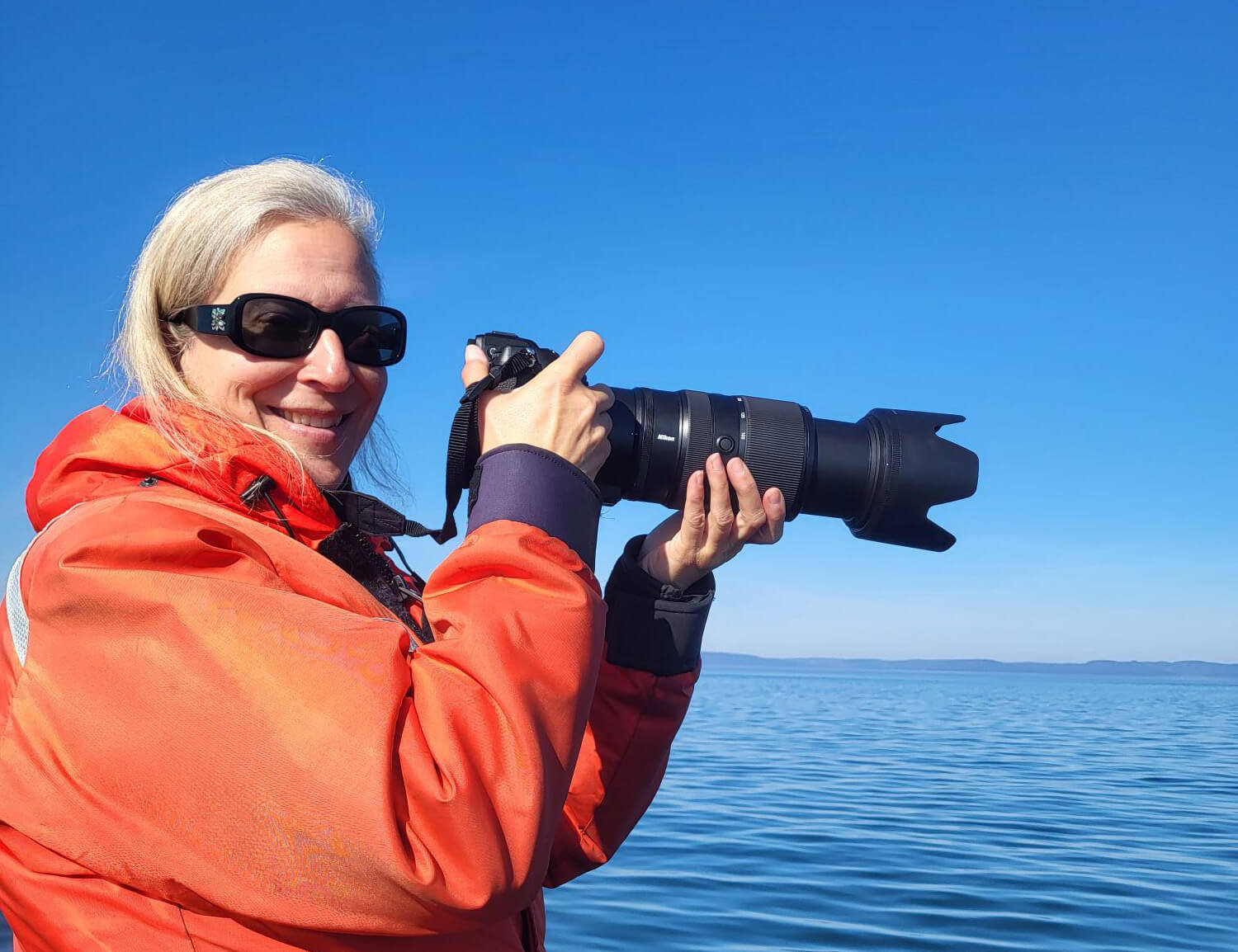Start of the Calving Season
For belugas, the calving period runs from June to September. So it’s no wonder that we made our first observations of calves this week. These animals are probably at most a few days or weeks old and are easily identifiable by their clumsy way of surfacing to breathe, as well as the fetal folds visible on their bodies.
Off the coast of Baie-des-Rochers, we find a small herd with one white animal accompanied by a calf and a young gray individual. Rather quickly we notice that the newborn is constantly pressed against the white adult’s side during each breathing sequence, which leads us to assume that it is his mother. We were able to observe it for a little over an hour and on a few occasions the newborn was alone at the surface for a few minutes without the other animals in the group. No need to panic, its mother did not disown it!
This type of scenario is often observed, whereby the calf, being physically weaker than the young grays or adults, is unable to keep up with the others on long dives. This is also, we believe, why we regularly see newborns with belugas other than their own mothers… babysitters perhaps!
Click on the map to navigate with the Bleuvet and discover the highlights of the week!
IDENTIFICATIONS OF THE WEEK
Pacalou – adopted in 2006 by Pascale Cauchi;
Yogi – adopted in 1988 by Bell Canada;
Bélibec – adopted in 2014 by Québec City;
Blanche – adopted in 2014 by the municipality of Tadoussac
and DL90108.
The complete list of identified belugas requires meticulous efforts to match individuals, which will be undertaken after the field season.
Property of the  GREMM and the St. Lawrence National Institute of Ecotoxicology, the Bleuvet is a research boat dedicated to the research program on St. Lawrence belugas. Managed by GREMM scientific director Robert Michaud, the Bleuvet crew is composed of Michel Moisan, Tim Perrero and Simon Moisan.
GREMM and the St. Lawrence National Institute of Ecotoxicology, the Bleuvet is a research boat dedicated to the research program on St. Lawrence belugas. Managed by GREMM scientific director Robert Michaud, the Bleuvet crew is composed of Michel Moisan, Tim Perrero and Simon Moisan.





